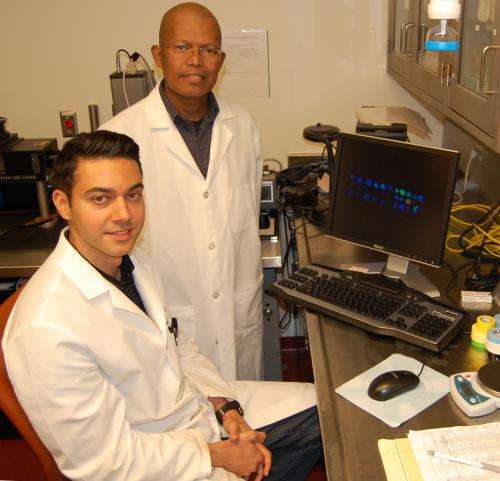Scientists develop a new way to identify good fat

When it comes to fat, you want the brown type and not so much of the white variety because brown fat burns energy to keep you warm and metabolically active, while white fat stores excess energy around your waist, causing health problems. Researchers at The University of Texas Health Science Center at Houston (UTHealth) Medical School are studying brown fat with a goal of fighting obesity.
Right now, it is hard for researchers to spot brown fat cells at the molecular level, which is hindering efforts to harness their ability to guard against obesity. To address that issue, scientists developed a brown fat detection method and it worked in an animal model. This proof-of-concept study is published today in Nature Communications.
"Brown adipose tissue, responsible for heat generation, has high importance in the context of metabolic diseases. Brown fat is more common in children but has recently been discovered in adult humans. However, measurement of its body distribution has remained technically challenging. We report a peptide probe that zeroes in on brown fat and can be used for localization of this tissue in mice by whole body imaging," said Mikhail Kolonin, Ph.D., the study's senior author and associate professor at the UTHealth Center for Stem Cell & Regenerative Medicine. He receives support from a John S. Dunn Research Scholar Fund and is holder of the Jerold B. Katz Distinguished Professorship in Stem Cell Research at UTHealth.
If this brown fat detection strategy proves effective in clinical trials, it could allow doctors to personalize treatments based on the ratio of brown fat to white fat of their patients. Further, it might help monitor stimulation of brown fat through prospective therapies.
"This is the first targeted imaging approach for the detection of brown fat," Kolonin said.
Kolonin teamed up with UTHealth medical imaging researcher Eva Sevick-Muraca, Ph.D., to develop a near-infrared fluorescence imaging probe that binds to brown adipose vasculature and emits tiny amounts of skin-penetrating light that can be picked up by highly sensitive cameras. Sevick-Muraca is professor, director of the Center for Molecular Imaging and holder of the Nancy and Rich Kinder Distinguished Chair in Cardiovascular Disease Research at UTHealth.
The probe is a peptide comprised of a series of amino acids. Kolonin's team tested numerous combinations before finding one that selectively localizes to brown fat when administered intravenously. Sevick-Muraca's team coupled the peptide with a dye that could be picked up during whole body scans.
More information: "A peptide probe for targeted brown adipose tissue imaging" Nature Communications, 2013. www.nature.com/ncomms/2013/130 … full/ncomms3472.html
















